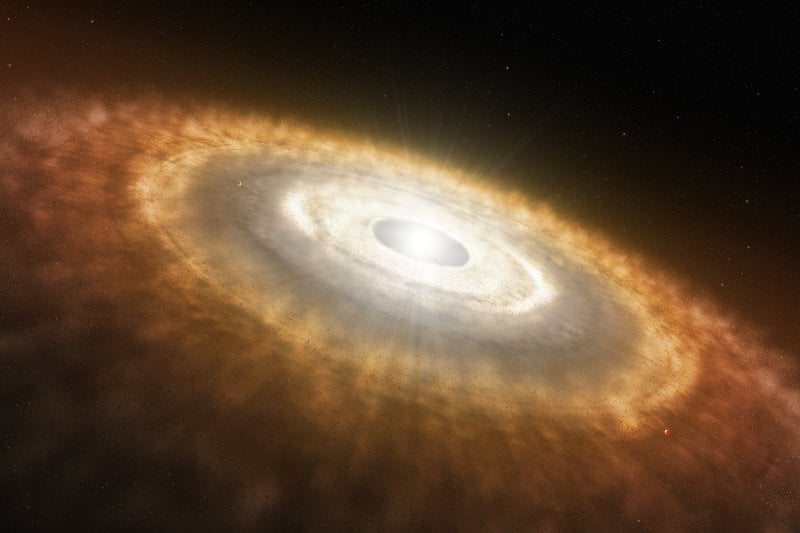For decades, astronomers have known our Sun contains a low amount of lithium, while other solar-like stars actually have more. But they didn't know why. By looking at stars similar to the Sun to study this anomaly, scientists have now discovered of a trend: the majority of stars hosting planets possess less than 1% of the amount of lithium shown by most of the other stars. "The explanation of this 60 year-long puzzle is for us rather simple," said Garik Israelian, lead author on a paper appearing in this week's edition of Nature. "The Sun lacks lithium because it has planets."
This finding sheds light not only on the lack of lithium in our star, but also provides astronomers with a very efficient way of finding stars with planetary systems.
Isrealian and his team took a census of 500 stars, 70 of which are known to host planets, and in particular looked at Sun-like stars, almost a quarter of the whole sample. Using ESO's HARPS spectrograph, a team of astronomers has found that Sun-like stars that host planets have destroyed their lithium much more efficiently than "planet-free" stars.
"For almost 10 years we have tried to find out what distinguishes stars with planetary systems from their barren cousins," Israelian said. "We now have found that the amount of lithium in Sun-like stars depends on whether or not they have planets."
These stars have been "very efficient at destroying the lithium they inherited at birth," said team member Nuno Santos. "Using our unique, large sample, we can also prove that the reason for this lithium reduction is not related to any other property of the star, such as its age."
Unlike most other elements lighter than iron, the light nuclei of lithium, beryllium and boron are not produced in significant amounts in stars. Instead, it is thought that lithium, composed of just three protons and four neutrons, was mainly produced just after the Big Bang, 13.7 billion years ago. Most stars will thus have the same amount of lithium, unless this element has been destroyed inside the star.
This result also provides the astronomers with a new, cost-effective way to search for planetary systems: by checking the amount of lithium present in a star astronomers can decide which stars are worthy of further significant observing efforts.
Now that a link between the presence of planets and curiously low levels of lithium has been established, the physical mechanism behind it has to be investigated. "There are several ways in which a planet can disturb the internal motions of matter in its host star, thereby rearrange the distribution of the various chemical elements and possibly cause the destruction of lithium," said co-author Michael Mayor. " It is now up to the theoreticians to figure out which one is the most likely to happen."
Read the team's paper.
Source:
ESO
 Universe Today
Universe Today
